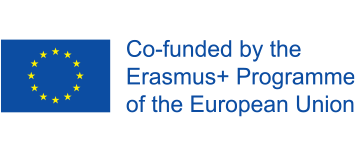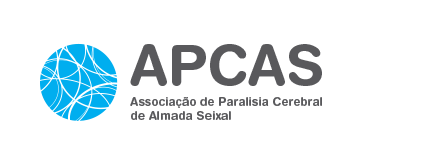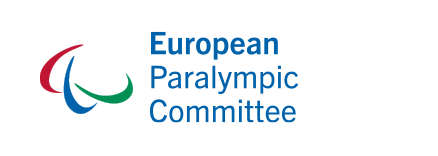STRATEGIES AND METHODOLOGIES FOR SPORT INCLUSION
CHAPTER I
Sport is used as a generic term, comprising sport for all, physical play, recreation, dance, organized, casual, competitive, traditional and indigenous sports and games in their diverse forms (UNESCO, 2017).
Sport means all forms of physical activity which, through casual or organised participation, aim at expressing or improving physical fitness and mental well-being, forming social relationships or obtaining results in competition at all levels (Council of Europe, 2001).
Sport is an excellent way of promoting participation in the community and the full inclusion of persons with disabilities, as it allows for the dismantling of stereotypes about disability, helping to build a more inclusive society where there is more cohesion and social cooperation (UN, 2006).
Sport in its recreational, therapeutic and competitive aspects, emerges as a means of enhancing social interaction and providing benefits at three levels: personal health; individual development and social/ environmental (EC, 2018).
Thus, persons with disabilities need regular physical activity to contribute to the development of healthy lifestyles (Koldoff & Holtzclaw, 2015).
Persons with disabilities who engage in physical activity have a better quality of life and greater personal satisfaction than persons with disabilities who are not involved in any sport activity (Yazicioglu, Yavuz, Goktepe & Tan, 2012). Individuals with disabilities who practice sport are found to have more confidence in their abilities, maintain closer friendships and have lower levels of loneliness (Shapiro & Martin, 2014). This is because, given the improvements at the functional level, it allows individuals a greater predisposition to social interaction and effective participation in society (Martin, Alves & Duarte, 2012).
In fact, sport allows psychomotor, functional and personal development. Namely, it allows: improvement of physical condition; increased functionality; motor skills development, such as balance, coordination, rhythm, among others (Koldoff & Holtzclaw, 2015; Martin, Alves & Duarte, 2012); improved body satisfaction, favoring feelings of self-esteem, self-acceptance and self-confidence; increased motivational levels; decreased depressive, anxiety and stress levels; and improving social skills (Koldoff & Holtzclaw, 2015; Martin, Alves & Duarte, 2012; Rafael et al., 2012).
Sport is a context of excellence for the formation and promotion of values and attitudes that enhance diversity. Thus, the participation of all in sport allows recognition and understanding of values and attitudes, enhancing the inclusive process, being an asset for the quality of life and self-determination of persons with disabilities (Rosado & Moniz Pereira, 2016).
Physical activity is fundamental for persons with disabilities because it gives visibility and recognition to the abilities and potentialities of persons with disabilities, not to their difficulties / limitations.
Despite barriers to the participation of persons with disabilities, they should not be prevented from accessing sport regardless of the functionality of the individual. Therefore, a social, physical and professional restructuring is essential for the promotion of the inclusive process (Martin, Alves & Duarte, 2012).
The inclusion and even sport sector presuppose the awareness of the whole community – all citizens have a role to play in promoting a progressively more inclusive society. This requires that all citizens respect, understand and know how to deal with each other for a healthy and inclusive socialization. This is intended to (Foley, Tindall, Lieberman & Kim, 2007):
- change misconceptions that people may have about individuals with disabilities;
- improve perceived abilities of individuals with disabilities;
- promote socialization among peers with and without disabilities;
- allow awareness of disability barriers and how they can be overcome together;
- promote social awareness and respect for ALL regardless of functionality, gender, age, etc.
For this, often one of the first steps to promoting inclusion is to explain to all stakeholders what functional diversity is and how to deal with it (depending on each case), breaking down barriers and demystifying. Sport is an excellent tool in promoting this process. Some tools promoting disability awareness are:
- Contact with persons with disabilities through testimonials and lectures, where everyone is allowed to openly ask various questions about persons with disabilities. At sport level, for example, the testimony of athletes with disabilities (whether they are highly competitive or not), as well as the practice of the sport together with the players – are great strategies for transmitting the potential and capabilities of persons with disabilities;
- Put yourself in the “shoes of others” by experiencing some of the difficulties that persons with disabilities have in their daily lives or in the specific context of sport. Thus, getting persons without disabilities to try the wheelchair, or orienting themselves in space (with close eyes), is a good way to get a glimpse into each other’s life vision. In this context, the reverse inclusion model can be a good strategy;
- Jointly identify barriers to inclusion of persons with disabilities and find alternatives for resolution, promoting accountability for activities in which everyone, without exclusion, can participate – thus giving all students with an active role in finding and meeting solutions to continually include colleagues. The solutions could be: architectural barriers in sports facilities (where you may find that colleagues, for example, in a wheelchair, cannot do sport because architectural access does not allow them); attitudes (promoting strategies including in relation to their peers – where they can be challenged to mobilize to cooperate with each other and to value the success factor in performance when everyone is playing).
So, when we talk about promoting methodologies that promote inclusion in and through sport, we must talk about promoting everyone’s participation in sports activities – but for that, the community must have knowledge, develop, disseminate and demystify issues inherent in promoting inclusive sport. In this process multiple actions of awareness and increase of sports practice for all can be developed, such as:
- Community actions & Dissemination – development of actions that have a strong impact on the community as a way of informing, publicizing potential offers and enabling experimentation. They can be performed in various contexts – indoor and outdoor (schools, municipalities, sports clubs, on the street, etc.). But also dissemination and information campaigns are necessary for the community and different stakeholders.
- Sharing experiences – through the development of conferences, thematic forums, among others, it is important to discuss with the most diverse stakeholders – persons with and without disabilities, professionals, family members, etc. – about their role in developing a sports culture for all and sharing good practice;
- Development of sports meetings – developing recreational or competitive sports meetings (including Paralympic Games) between all those who practice sport and those who want to start sport, with or without disabilities, with one or more sport (multi sports or disciplines);
- Training – Develop training actions for different target groups – for teachers, coachs, technicians, technical assistants, family members, volunteers – to encourage sharing and continuous updating of knowledge;
- Consultancy and coaching – Consulting and initial technical-sports when implementing and developing the incusive sport in a school, community, institutional and / or club context – essential for diversifying sport regularity for all and increasing sporting offerings;
- Materials / Equipment – Have the possibility to find specific materials in the community for the development of activities. For example, the implementation of a resource center that can lend material for the development of activities and, in turn, store and repair materials that are no longer used by one entity but could be used by another – from a sharing perspective resources.
Examples
Chapter I




In the specific case of this output, it is not intended to address generic actions to be taken to promote inclusion in sport, but rather to provide tools that promote regular and equal opportunity for sports – whether individual or collective activities, recreation or competition, regardless of functionality – although the above actions are essential to initiate and continue this opportunity to practice.
Thus, the promotion of inclusive sport assumes that everyone, on an equal opportunity basis, can (Rosado & Moniz Pereira, 2016):
- participate regularly in sports activities;
- develop their physical condition;
- demonstrate, in sporting environments, a personal and social behavior of respect for self and others;
- develop motor skills and movement patterns for the performance of a variety of physical / sports activities;
- understand movement concepts, principles, strategies and tactics applied to learning and performing sports activities;
- value physical activity as a means for health, fun, challenge, personal expression and social interaction.
For this, it is important to know Inclusion Spectrum, which can be used to support the planning and development of inclusive sports activities (Stevenson 2009; cit in Kiupis, 2016; Black & Stevenson, 2011). In this model, inclusion is seen as the responsibility of allowing equal opportunities for participation for persons with disabilities, ensuring that everyone has the same opportunity and choice in participation (Misener, 2014).
Hence, inclusion debates in sport are not about how to substitute special structures with integrative ones, and those in turn with inclusive ones, but are characterized by giving each approach equal importance and validity.
(kiuppis, 2016, p.8)
Thus, the Inclusion Spectrum proposes various modalities to promote the inclusive process in sport (Black & Stevenson, 2011) – demonstrating how varying degrees of accommodation and inclusion can be articulated in the sporting environment, enabling a continuum in participation and maximizing the potential of all (Misener, 2014) – according to the image below (Kiuppis, 2016):

Adapted from Inclusion Spectrum (Black & Stevenson, 2012)
| Modalities | Description | Example |
|---|---|---|
| Open Activity | Activities where all participants perform the same activity with minimal or no adaptations | Warm-up Cooperative games |
| Modified Activity | Activities in which everyone participates, with adaptations that promote the inclusion of everyone in the same activity | Activities with adaptations of: teaching style, rules/ regulations, equipment and / or environment |
| Parallel Activity | The same activity is performed separately according to the level of competence to perform it - each group performs the same activity, but in different versions | Versions of the same activity or game (e.g. basketball vs. wheelchair basketball) Ability-matched zones within a larger activity |
| Separate Activity | Planning separate activities (individually or in groups) especially for persons with disabilities | Activities implemented with persons with diabilities only |
| Disability Sport Activity – Reverse Inclusion | Reverse Inclusion - Persons without disabilities carry out activities structured and planned for persons with disabilities. “Include persons with disabilities in sport-specific activities for persons with disabilities” | Boccia Goalball |
When we talk about adaptations, we talk about modifications of the activity or game that aims to make it possible to practice or increase participation in the activity to persons who would otherwise be prevented from doing so – requiring the manipulation of relevant components of the task (Moniz Pereira, 2016).
And, therefore, before approaching the strategies themselves, it is important to understand the task – through an ecological approach to the task, which allows a dynamic view of performance / movement that interconnects and emerges from the relationships between the following components: task objective, individual and context (Davis & Burton, 1991) – given these dimensions and their manipulation, new options and choices are possible for individuals.

ETA (Adapted Newell, 1986; Davis & Burton, 1991; Hutzler, 2007)
As an extension to this proposal, Hutzler (2007) speaks of Systematic Ecological Modification Approach (SEMA), correlating with the terminology of the ICF – International Classification of Functioning, Disability and Health (WHO, 2001), which contains components and how they relate: activity, body structures and functions, participation, environmental factors and personal facts – thus allows an interdisciplinary and dynamic approach to outcome analysis and intervention design.
SEMA provides that adaptations should take into account the interrelationships between the task (the requirements to be performed), the individual (functionality and resources) and its context (facilitators and performance-influencing barriers) and its analysis should take into account (Hutzler, 2007):
- The definition of the objective of the task, which is the result of the dynamic relationship between the individual and their environment. The task may be the result of an activity (e.g. throwing) and / or a participation (e.g. playing soccer).
- The objectives of each task should be evaluated against appropriate criteria: qualitative and / or quantitative – and therefore performance criteria should be defined.
- Identification of facilitators and barriers to carrying out the activity and participation.
- Identifying errors in performance / task performance – for which adaptations will be required.
- Suggesting adaptations that enable activity and participation – which should be the result of a relational and dynamic analysis, taking into account the individual’s functionality, task requirements and involvement.

Thus, as a complement to the Inclusion Spectrum, models were developed that demonstrate, in a useful and practical way, strategies that promote the structuring of adaptations to activities (Kiuppis, 2016). Referring to STEP and TREE model, for example, whose acronyms derive from the adaptation components that they propose as strategies to make activities more and more inclusive:
- The STEP model, developed by Youth Sport Trust: S-Space; T-Task; E-Equipment; P-Person;
- The TREE model is a variation of the previous model and was developed by the Australian Sports Commission Disability Sport Unit: T-Teaching or coaching style; R-Rules and Regulations; E-equipment; E-Environment – which introduces special attention to the actions of the practitioner by introducing the teaching style. This will be the model that we will apply throughout this output.
T | Teaching or Coaching Style | In the way the activity is transmitted to the participants, it is necessary to adapt the communication and instruction methodologies, making it more effective and appropriate. |
|
R | Rules and Regulations | Activity dynamics adaptations – rules and regulations – adapting to participants’ competences |
|
E | Equipment | Alteration or adaptation of more appropriate equipment to promote participation and performance in the activity |
|
E | Environment | Adaptations related to the context in which the activities take place |
|
Remember: Professionals are always adapting – adapting to age, motor skills, etc. – Adapting to the abilities of persons with disabilities is no exception – sometimes it works, sometimes it doesn’t! You have to try, try, try and improve always!
Warn of the need for creativity and flexibility of the teacher / practitioner who develops inclusive sport activities – promoting a more inclusive and less exclusive view (eg separate activities) in streamlining activities; valuing the interests, needs and opinions of persons with disabilities and the group in which they operate, as they will be fundamental elements in finding solutions; promoting success in sport, with no sense of promoting self-management and accepting inclusive sport as an ongoing challenge in finding solutions and adaptations – bearing in mind that adaptations may (or may not) be the same over time. And don’t forget to always ensure safety conditions!
Some general strategies may be suggested to enhance this learning for all individuals, such as (Martin, 2006; Fulton, 2004; Bataglion, Zuchetto & Nasser, 2014):
- active role of the individual in the planning and process of competence acquisition;
- discuss with the individual strategies for overcoming difficulties;
- ask individuals what they feel;
- promote motivation and active exploitation with a view to developing autonomy and independence;
- provide variability of experiences;
- encourage information sharing among the different stakeholders – persons with disabilities, peers, caregivers, coaches, etc.
In a personal context, for individuals with disabilities to become more active it is necessary to foster the ability to realize the importance of the general benefits of exercise and to interpret physical activity as promoting physical and psychological well-being (Verschuren, Wiart, Hermans & Ketelaar, 2012).
In addition, enhancing an inclusive and longitudinal approach to sport enables individuals with disabilities to be empowered and promotes the well-being and quality of life of individuals from the earliest possible perspective close to the context of the possible individual (school, family, among others). Therefore, the multidisciplinary development and articulation between all social actors (e.g. school, family, community) is crucial, seeking a complementarity of needs and interests, leading to an inclusive process of success, where all actors should be called sharing experiences, reflecting, challenging oneself and contributing to sports universality and a fairer society.
In fact, inclusion does not seem to be easy to understand, let alone implement. There is no recipe, there are challenges for the development of inclusive best practices, to the detriment of passive, conformist and constantly seeking attitudes to justify non-participation!
OUR SUPPORTER

OUR PARTNERS





